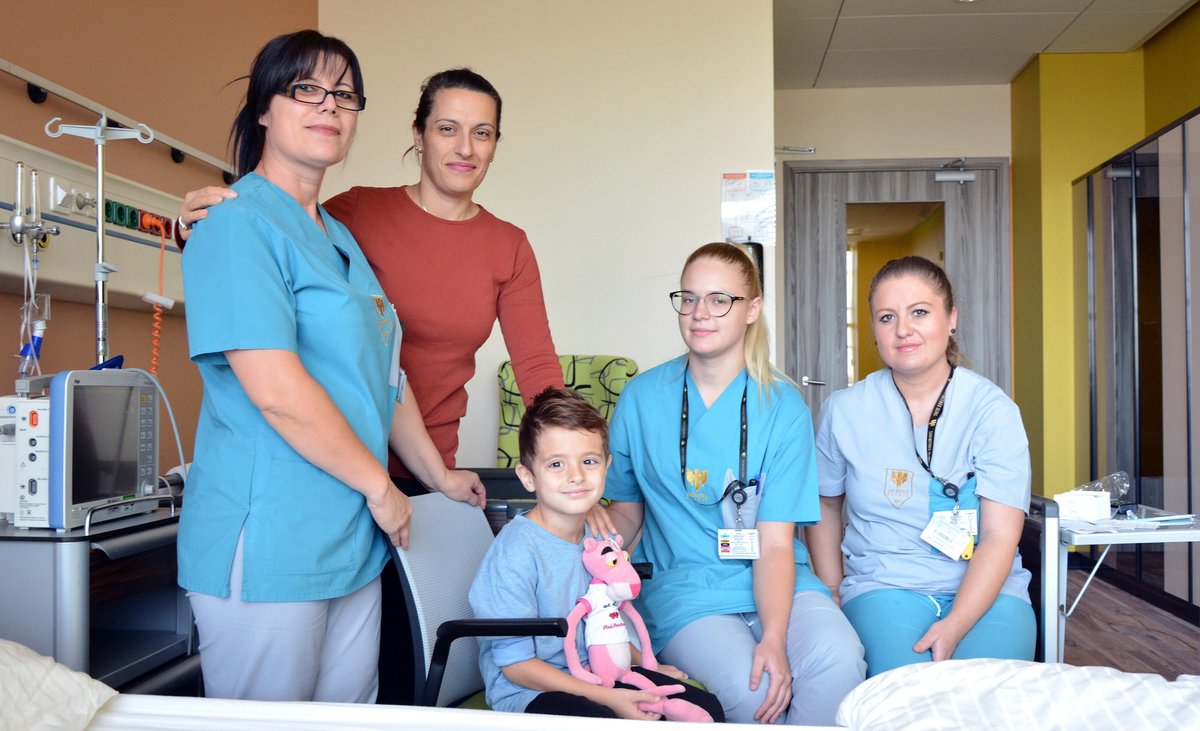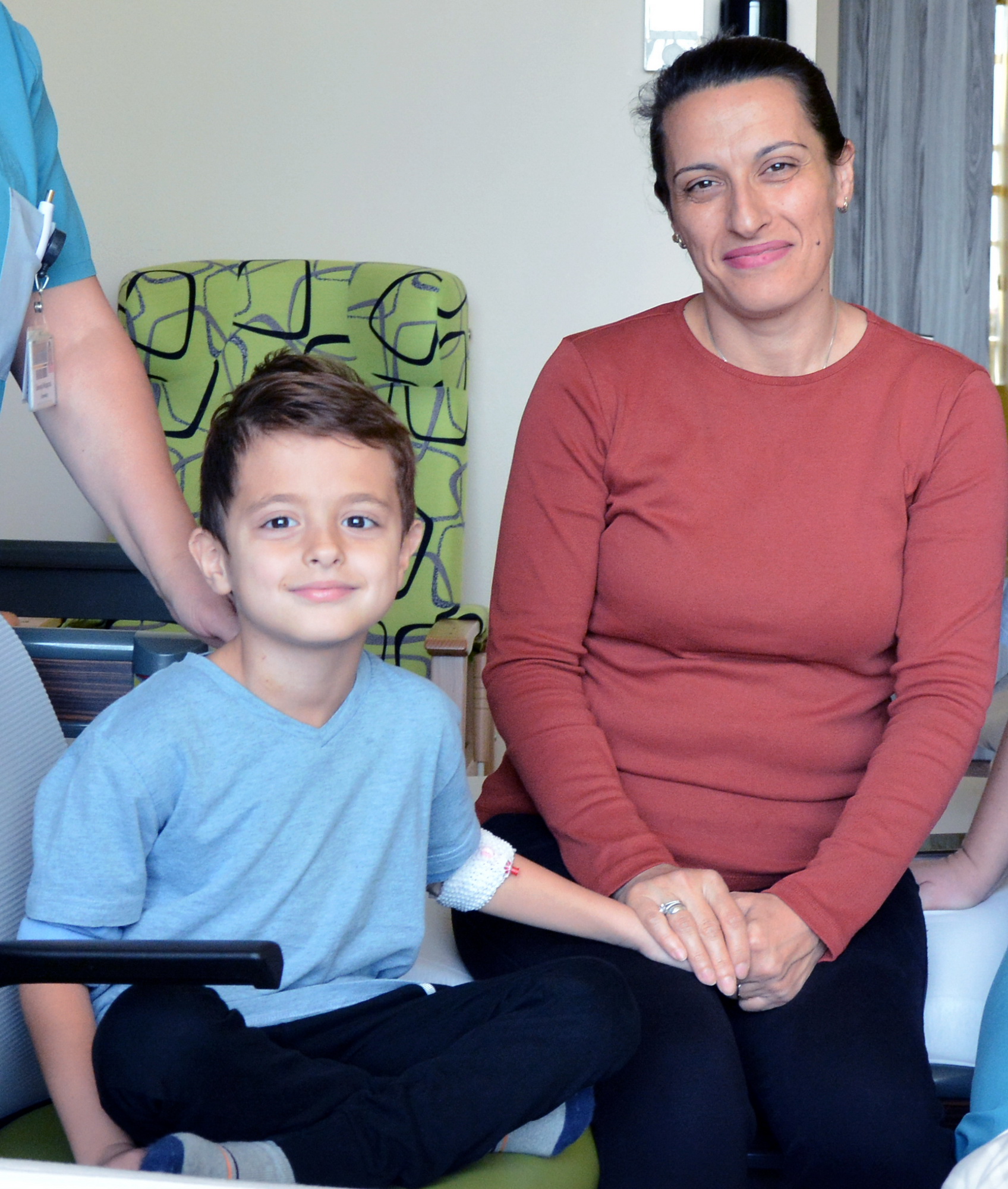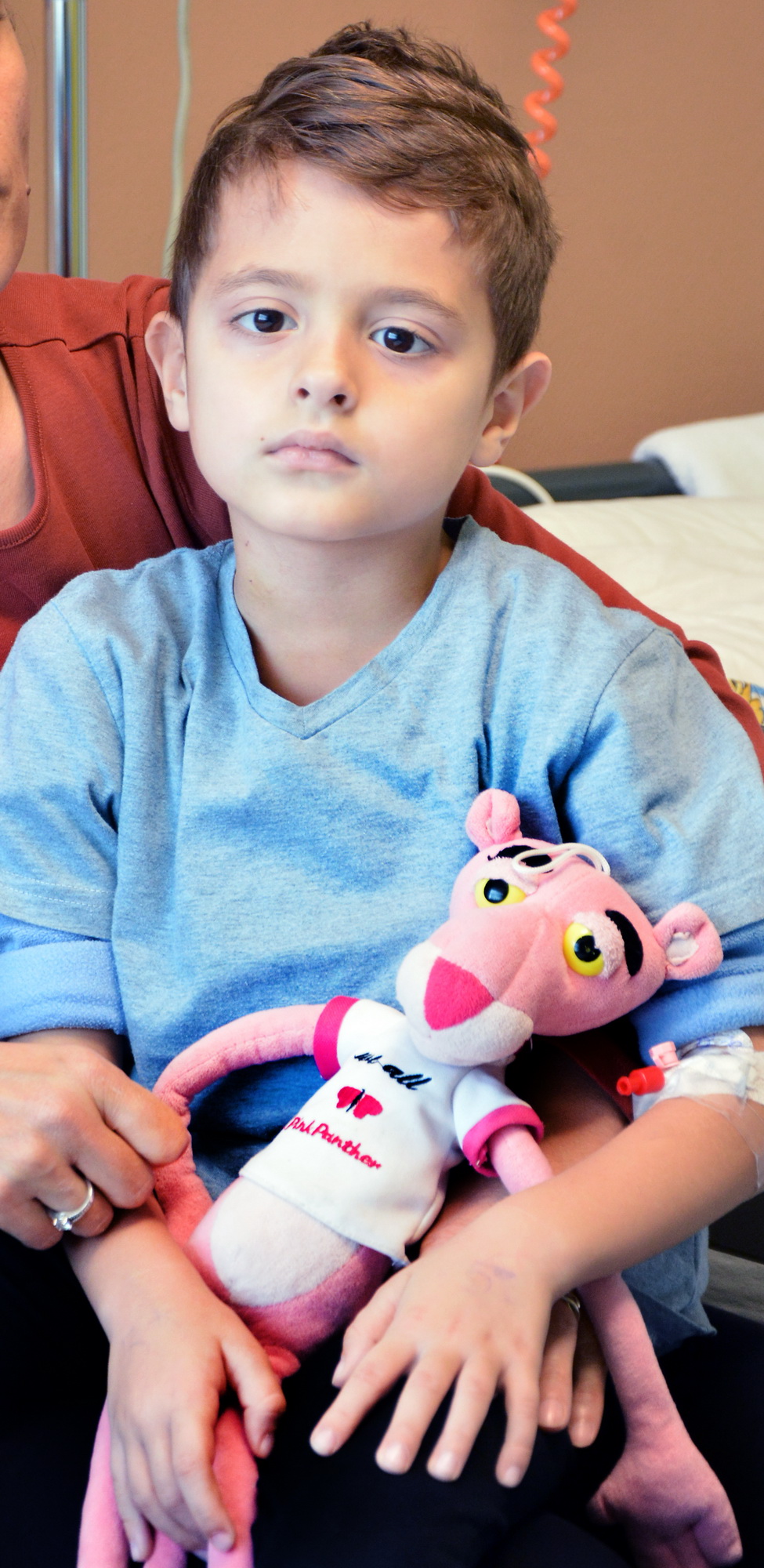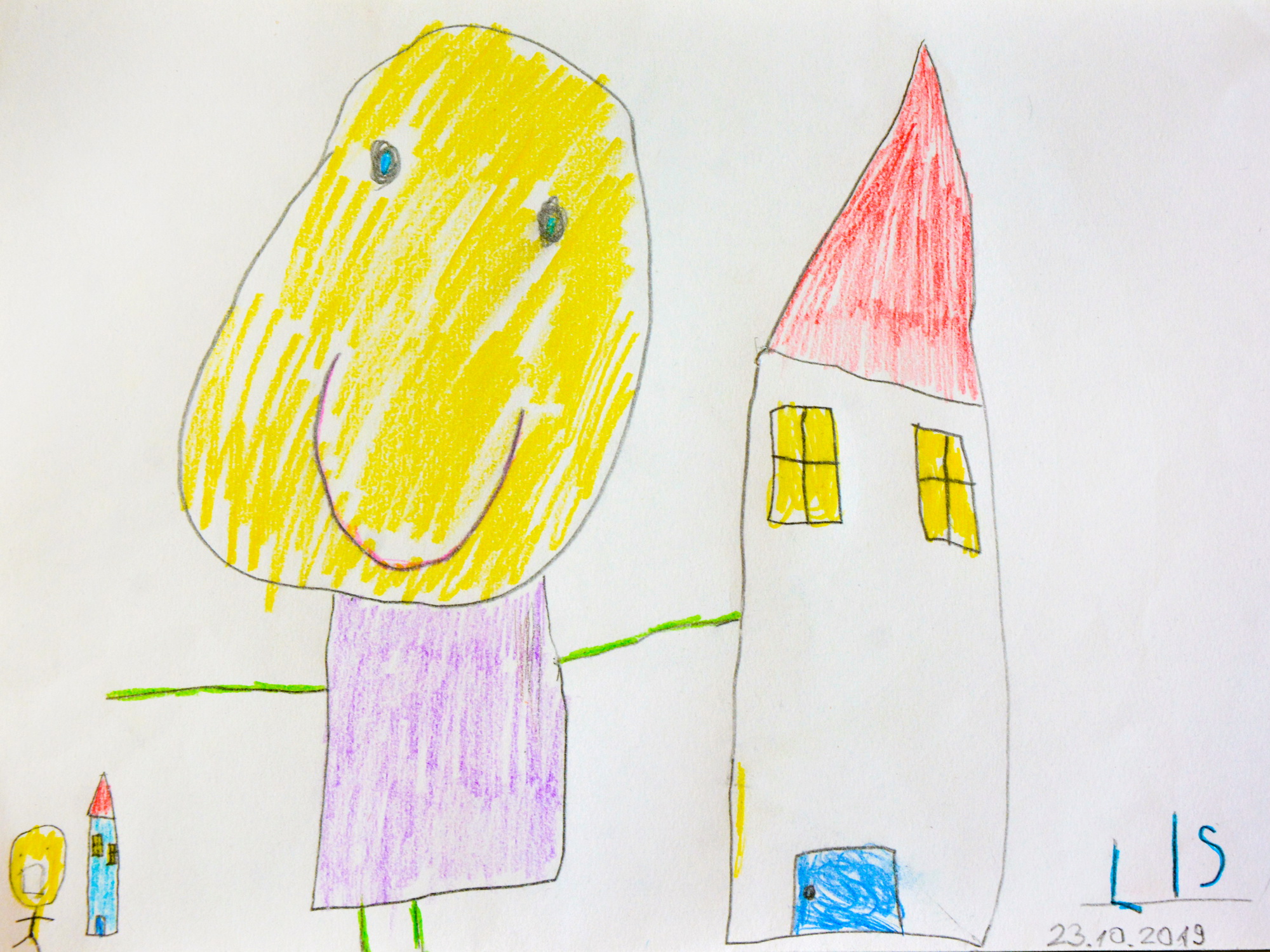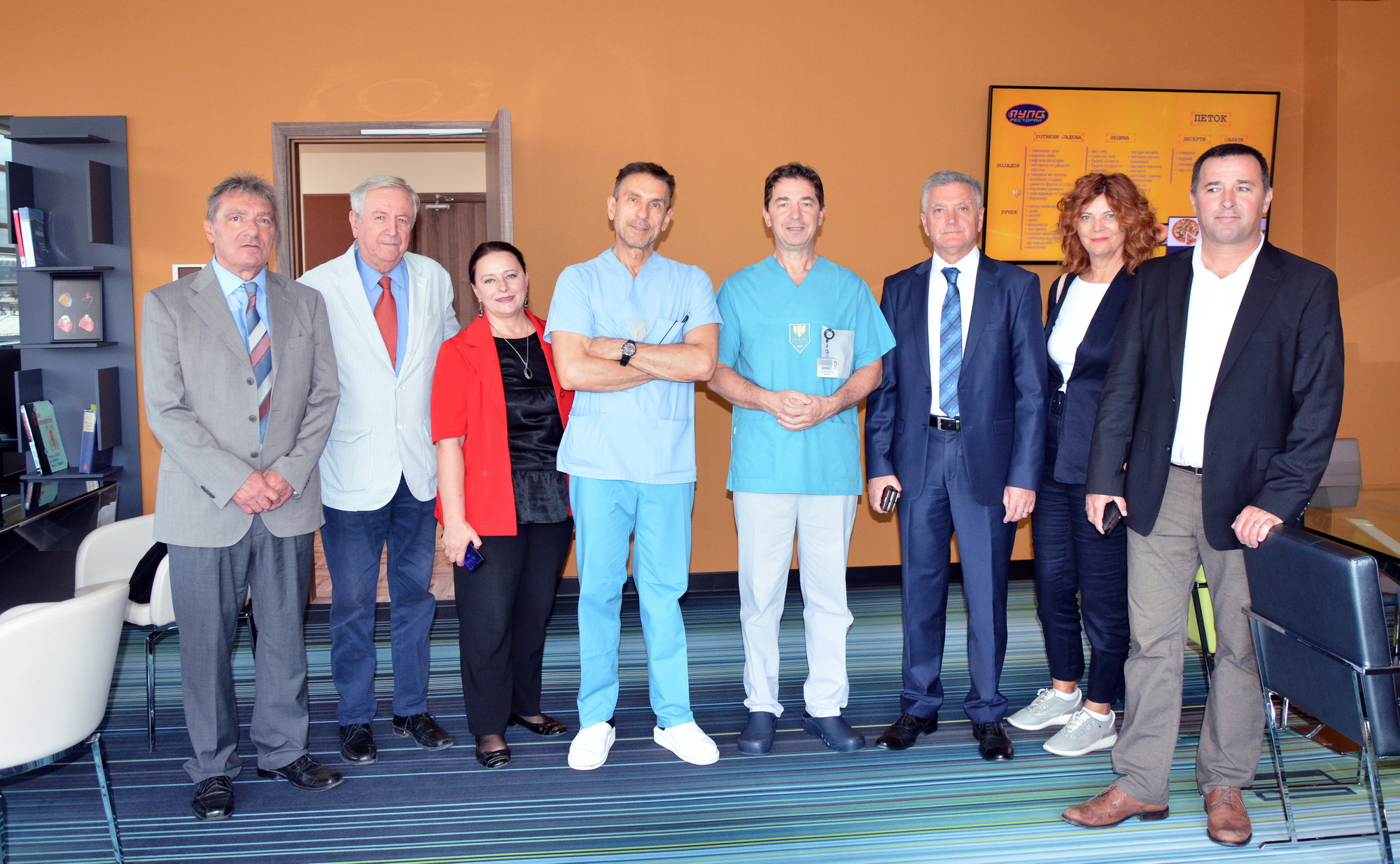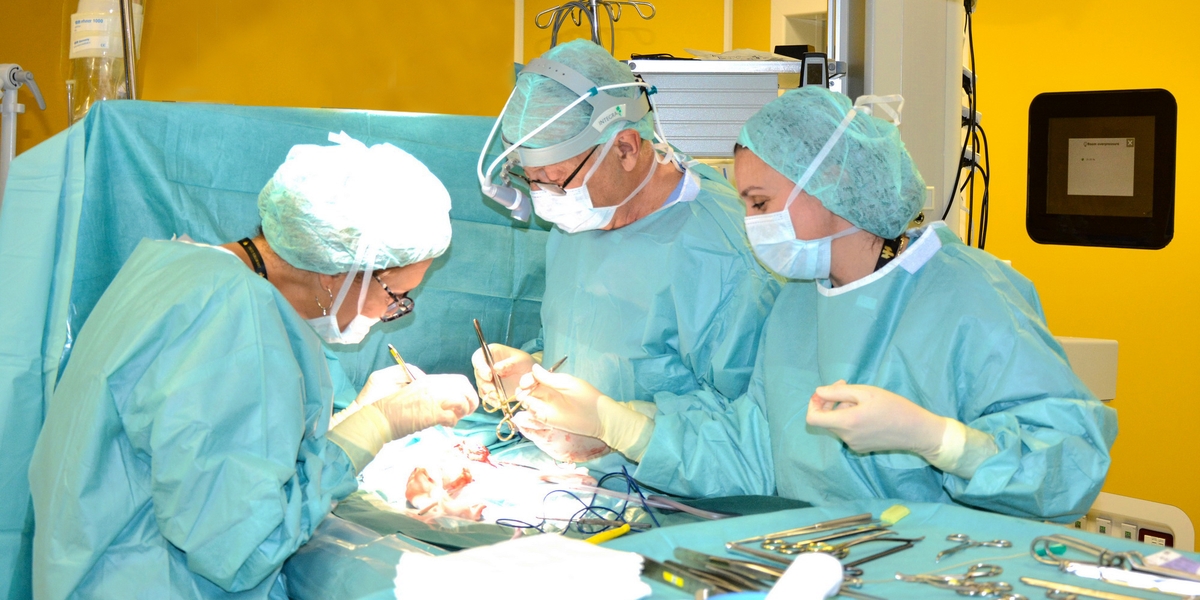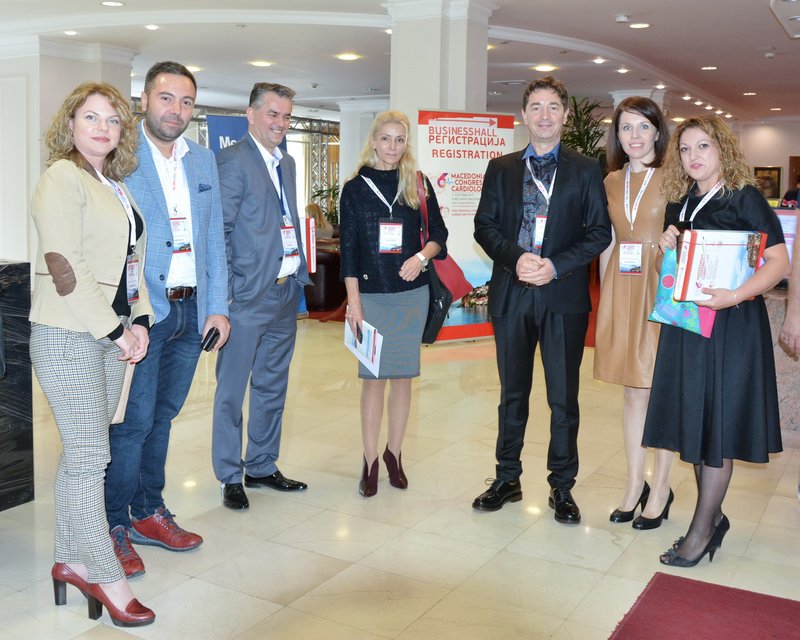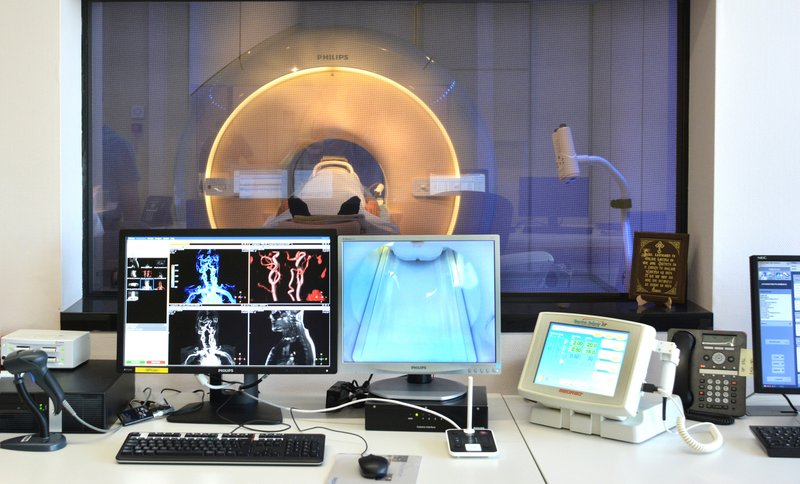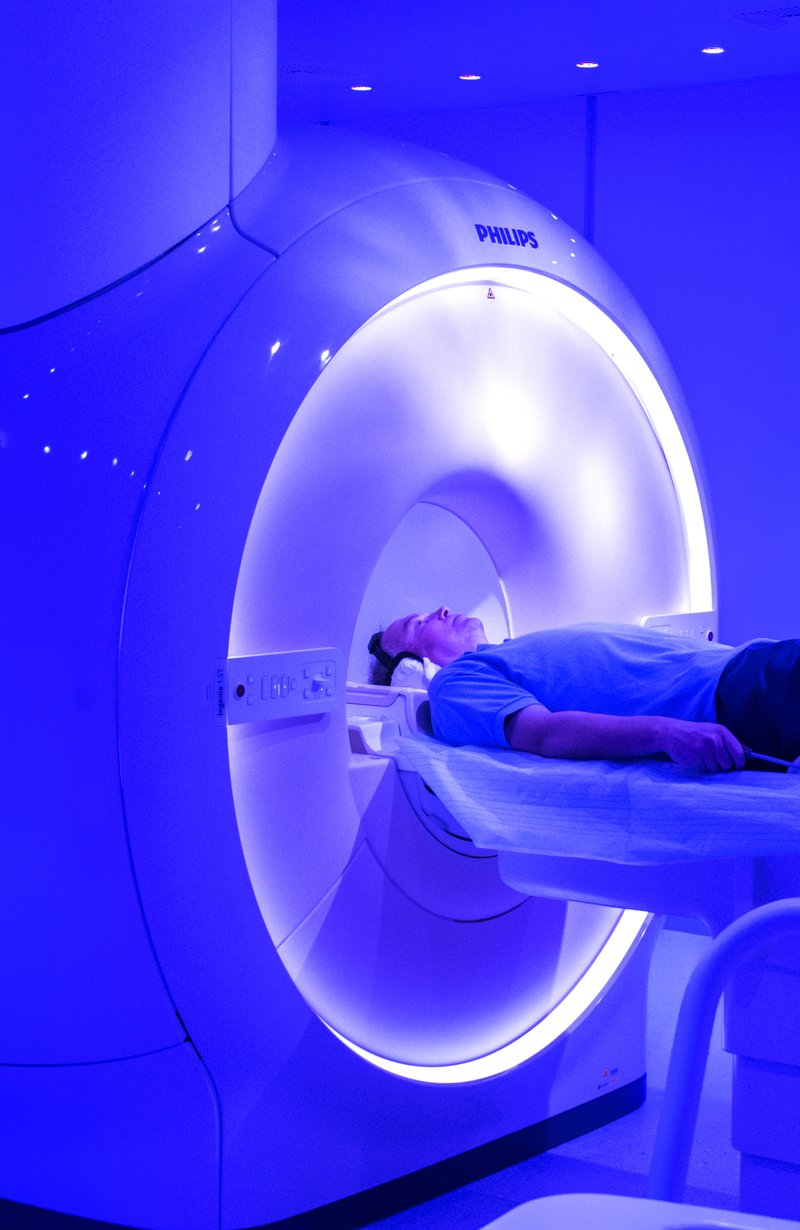
– I had enormous leg pain. I couldn’t walk for months. My whole body was in pain. I had no normal life for several years. My whole life has gotten worse … I was in agony. Despite the two surgeries performed in public hospitals, the tumour I had in my knee returned. I was desperate and did not know if there was any salvation for my leg, which besides being unable to use, it caused terrible pain. I couldn’t sleep, I couldn’t eat, I couldn’t live … – this is how the young woman from Veles, who left our clinic waking on both feet, started her life story despite the difficult situation she was in when admitted to our clinic.
The Zan Mitrev Clinic orthopaedics team, in this case guided by the orthopaedic surgeon Dr. Sasho Mladenovski, had a real challenge to save a young life and enable limb preservation, i.e., the left leg and a normal life in future. With the long-lasting complicated surgery, a large portion of the lower leg bone was removed, and for the first time in our country, a successful LPS rotation hinge (Limb preservation system) was implanted, which implies a modular implant system that could preserve the limb completely and establish its normal function.
Dr. Mladenovski explained how the patient was admitted at the Zan Mitrev Clinic, what was her diagnosis and how she was treated:
– The patient was diagnosed with an aggressive giant-cell tumour of the lower leg bone. She was twice operated in another public health facility, but after both surgeries, the same tumour was growing progressively, destroying the lower leg bone and upper joint at the height of 12 cm.
– The patient came to us in severe pain and unable to walk, referred by the Health Fund to private hospitals including ours, asking if this patient could be cared for and treated. With more than 2000 surgeries performed, with primary, revision and tumour primary endoprostheses of knees, hips and shoulders implanted, our orthopaedic team accepted her and agreed t be treated. So, the patient stayed here and received treatment – explained the doctor Mladenovski.
He emphasized that with this operation, a LPS revision rotation hinge cementless knee prosthesis has been implanted for the first time in our country.
– It is a modular system used in major bone defects caused by destructive neoplastic processes of the bones and joints, in people with poor healing of intraarticular fractures and severe osteoporosis, in patients requiring recurrent revision surgeries with pre-placed primary or revision implants on the large joints. This patient had a radical resection of the tumour itself, which means that more than a third of the lower leg bone is missing and replaced by a system that completely replaces the lost bone structure. In addition to the bone structure, this system complements the lack of all the necessary ligaments of the knee joint itself, which were sacrificed in the procedure for removal of the tumour – explained Dr. Mladenovski.
This complex system was successfully implanted. After the operation, the patient stayed in the hospital for another 7 days and gradually started and early physical therapy, such as cryo-therapy, gradual standing up and slight leg loading, because a period of 6 to 8 is needed for a complete adhesion of the cementless bodies placed inside the bones.
– The patient had a great recovery and is currently undergoing physical therapy. She started to make full steps with the operated leg, which means she started daily activities, and I I am happy to say that the surgery is successfully completed with the best possible outcome available for this type of surgery – concludes Doctor Mladenovski.
At the first follow-up, the patient felt great walking with both legs. Soon, she will e able to walk without the crutch and return fully to daily life.






